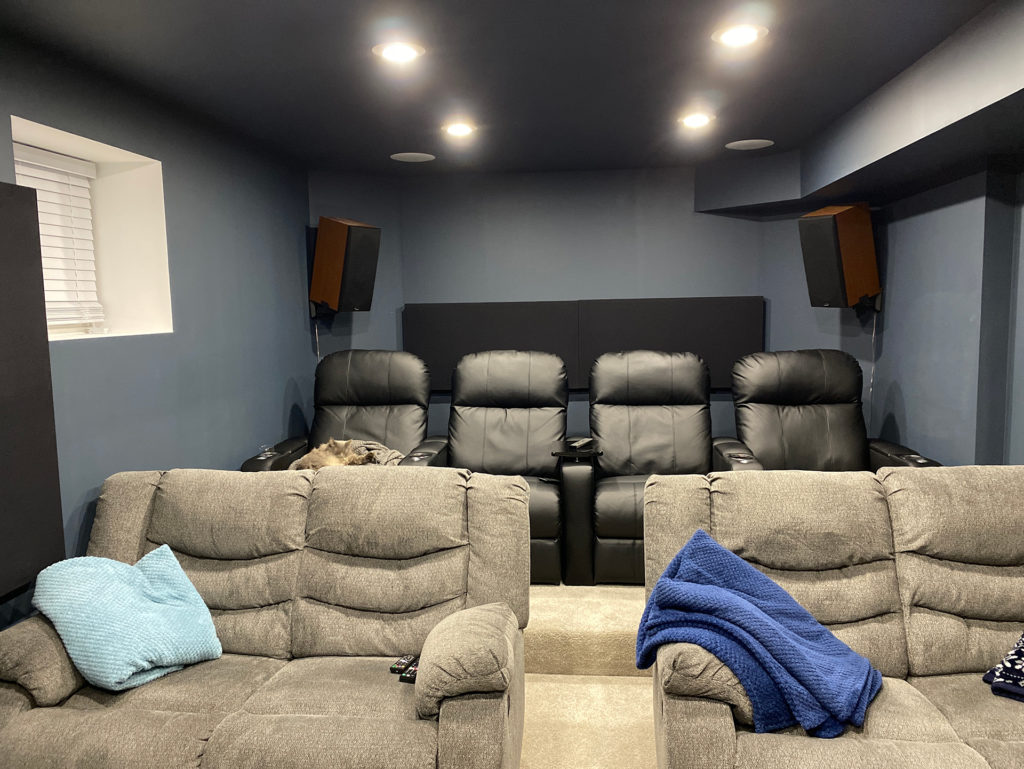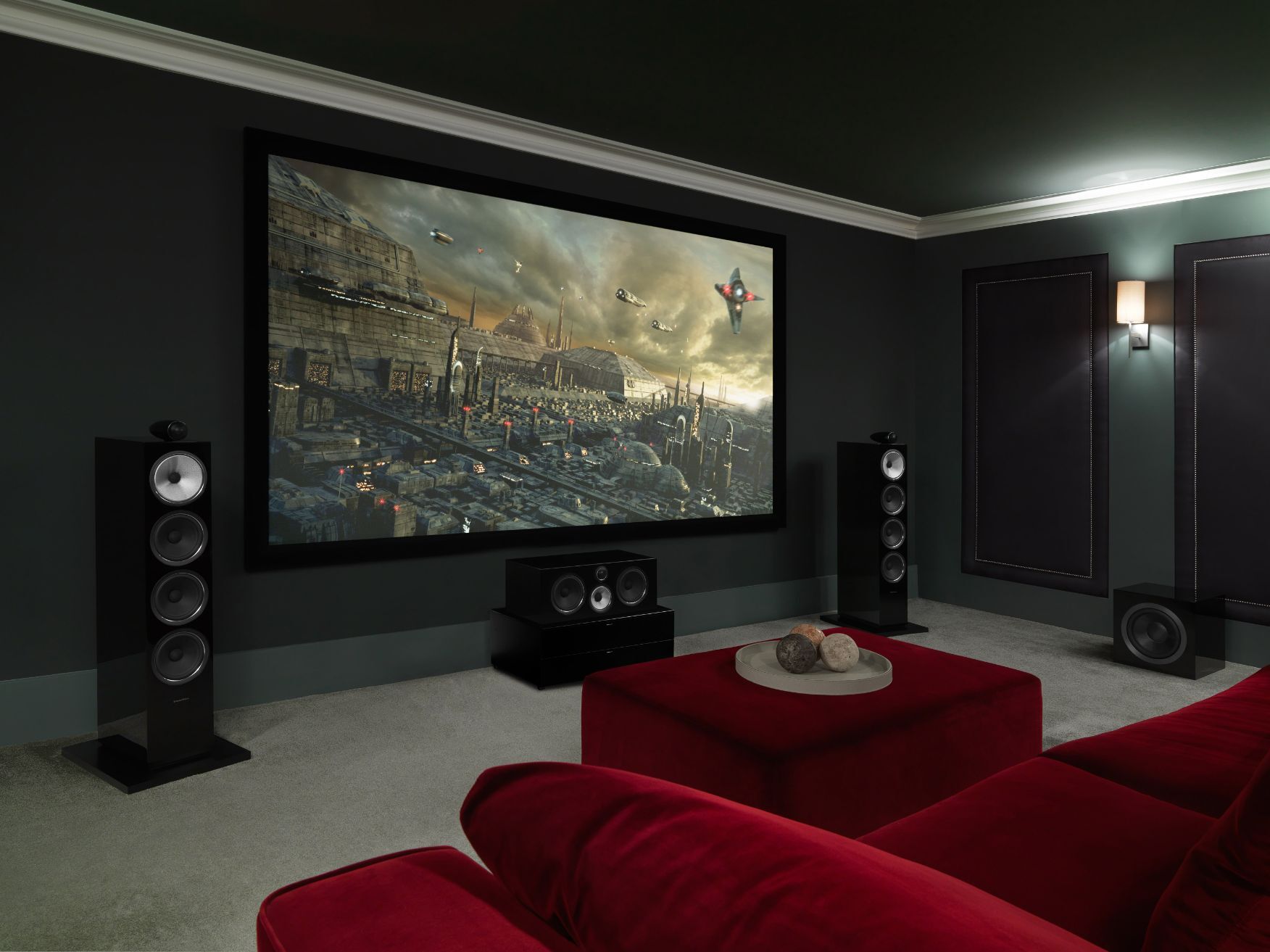Home Theater 101: Whatever You Need to Know for a Motion Picture Experience at Home
Creating a home movie theater that equals the motion picture experience of an industrial theater includes cautious factor to consider of multiple components, consisting of screen selection, sound systems, and room format. Whether you are contemplating the optimal screen dimension or the complexities of surround audio, comprehending these principles is necessary.
Selecting the Right Screen
When establishing a home theater, selecting the best display can make or break the checking out experience - tampa home theater installation. The display acts as the focal point of your configuration, affecting photo high quality, checking out angles, and overall visual. Trick factors to take into consideration include display type, size, and resolution
First, establish the appropriate display dimension based on your space dimensions and seating range. Next, pick in between various display kinds, such as fixed-frame, motorized, or retracting displays, each offering distinct advantages.
Resolution is one more essential variable. For an absolutely immersive experience, think about a screen designed for 4K and even 8K material, making sure sharpness and clearness. Additionally, take into consideration the display's gain, which affects brightness and comparison; a higher gain can improve illumination in well-lit areas, while a lower gain may be extra ideal for darker atmospheres.
Picking Audio Equipment
Audio equipment is a crucial part of any type of home movie theater system, substantially improving the overall watching experience. The selection of audio gear can establish the depth, quality, and immersion of noise, vital for creating a motion picture ambience.
When picking audio equipment, take into consideration a border audio system, which normally includes a receiver, multiple speakers, and a subwoofer. A 5.1 or 7.1 channel system is recommended, where the very first number represents the speakers and the 2nd the subwoofer, supplying an immersive soundscape. The receiver is the heart of the system, managing audio and video signals, and ought to support modern-day formats like Dolby Atmos for a boosted spatial experience.
Quality audio speakers are necessary; seek versions that use a balanced audio profile with excellent bass feedback. Floor-standing audio speakers can create richer audio, while bookshelf choices save area. Furthermore, consider wireless alternatives for simplicity of setup, although wired systems typically deliver remarkable efficiency.

Optimum Seating Plans
Creating a perfect home movie theater experience hinges considerably on optimal seating plans. The setup of seats plays a crucial role in both comfort and checking out quality, directly affecting the general cinematic experience.
First, consider the screen dimension and watching distance. An usual standard is to place seats at a range about 1.5 to 2.5 times the diagonal size of the display. This makes sure an immersive experience without straining the eyes.
Following, elevation is critical. If your seats is in a tiered format, the back rows should be greater than the front to prevent obstructions. For level seating, ensure that the front row is not also near to the display, which everyone has a clear view.
In addition, consider the arrangement in regards to social dynamics. Team seats can boost the communal experience, while specific seats may be liked for personal viewing.

Lastly, prioritize convenience with ergonomic seating that sustains extensive watching durations. Incorporating reclining chairs or supported seats can significantly boost the experience, making the home movie theater a preferred location for both enjoyment and relaxation.
Lighting and Atmosphere
Reliable illumination and setting are necessary elements of a well-designed home movie theater, as they considerably influence the seeing experience. The best lights can improve the motion picture feeling, while poor selections can interfere with it. For optimal results, take into consideration a split illumination method that includes ambient, task, and accent lighting.
Ambient lights offers basic lighting, making sure that the area is not totally dark, which can strain the eyes. Dimmer buttons are highly recommended, permitting modifications based on the content being viewed. Task lights, such as wall sconces or flooring lamps, supplies functional illumination for activities like reading or browsing the area without disrupting the overall atmosphere.
Accent illumination can be utilized to highlight building attributes or produce centerpieces, including depth and rate of interest to the area. LED strip lights behind displays or along racks can supply a refined radiance that boosts the aesthetic experience without overwhelming the audience.

Wiring and Installation Tips
A tactical circuitry configuration is critical for accomplishing optimum efficiency in your home cinema system. Proper electrical wiring not just guarantees premium sound and video signals yet additionally enhances the total aesthetic of your space. Begin by drawing up your layout, determining where each component will certainly be placed, including your display, audio speakers, and receiver.
When choosing wires, focus on premium, properly assessed electrical wiring to minimize signal loss. HDMI cords should be used for video connections, while audio speaker cable should match the specifications of your audio see page speakers and amplifier. Choose in-wall rated wires to abide by security requirements and keep a clean appearance.

Conclusion
In recap, producing an exceptional home theater experience requires cautious factor to consider of different components, including display option, audio equipment, seating arrangements, lights, and electrical wiring. By focusing on these variables, a motion picture environment can be efficiently reproduced, allowing for immersive seeing experiences that match traditional theater settings.
Creating a home theater that measures up to the cinematic experience of an industrial you can try these out theater entails her response cautious factor to consider of several components, including screen selection, sound systems, and area format.When establishing up a home cinema, picking the ideal screen can make or damage the watching experience. Next off, select between different screen kinds, such as fixed-frame, mechanized, or retractable displays, each offering unique advantages. For a really immersive experience, think about a screen made for 4K or also 8K material, guaranteeing sharpness and quality.In recap, producing an exceptional home cinema experience needs careful consideration of numerous aspects, including display selection, audio tools, seating plans, lighting, and circuitry.